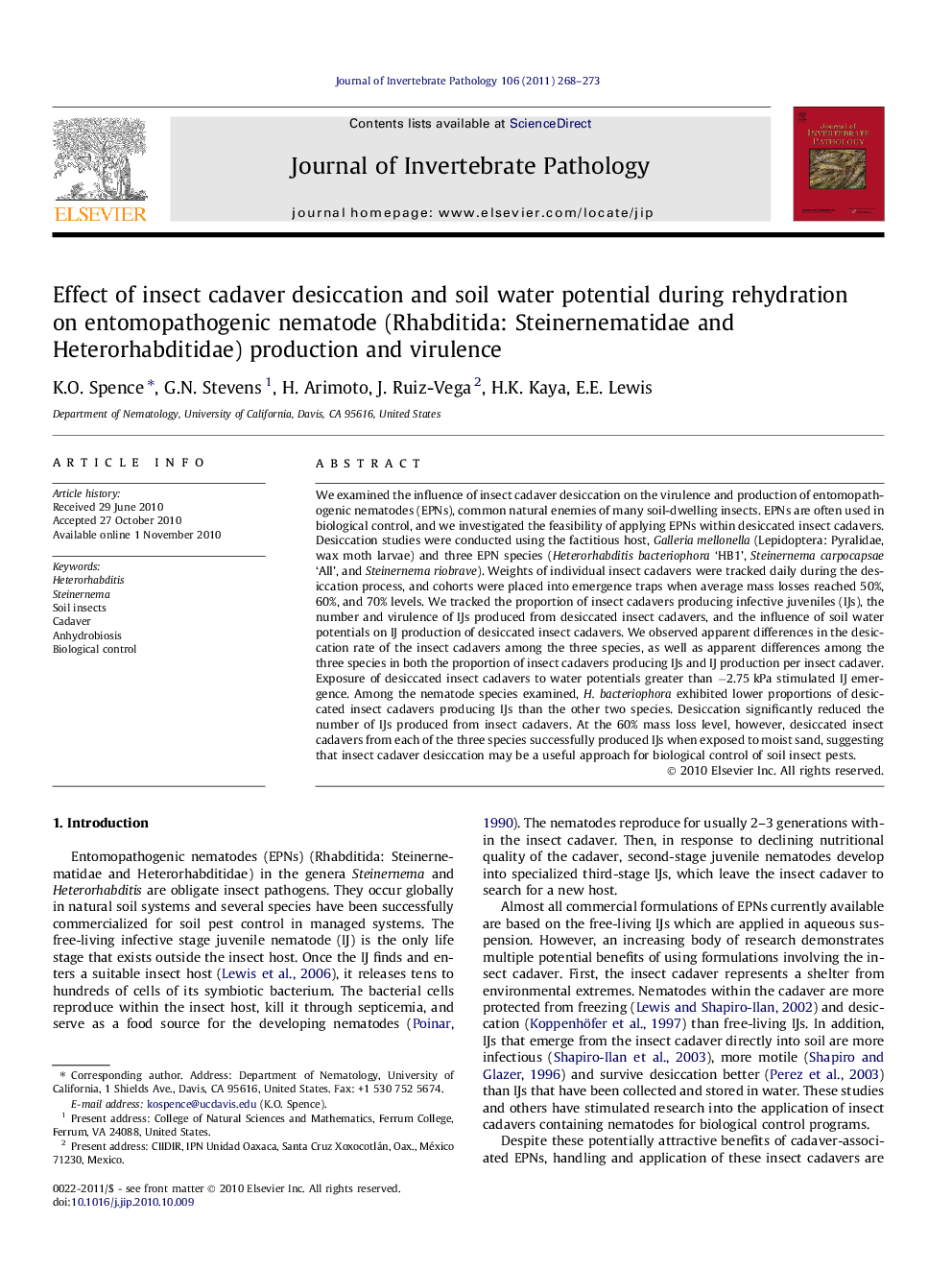| کد مقاله | کد نشریه | سال انتشار | مقاله انگلیسی | نسخه تمام متن |
|---|---|---|---|---|
| 4558094 | 1329921 | 2011 | 6 صفحه PDF | دانلود رایگان |

We examined the influence of insect cadaver desiccation on the virulence and production of entomopathogenic nematodes (EPNs), common natural enemies of many soil-dwelling insects. EPNs are often used in biological control, and we investigated the feasibility of applying EPNs within desiccated insect cadavers. Desiccation studies were conducted using the factitious host, Galleria mellonella (Lepidoptera: Pyralidae, wax moth larvae) and three EPN species (Heterorhabditis bacteriophora ‘HB1’, Steinernema carpocapsae ‘All’, and Steinernema riobrave). Weights of individual insect cadavers were tracked daily during the desiccation process, and cohorts were placed into emergence traps when average mass losses reached 50%, 60%, and 70% levels. We tracked the proportion of insect cadavers producing infective juveniles (IJs), the number and virulence of IJs produced from desiccated insect cadavers, and the influence of soil water potentials on IJ production of desiccated insect cadavers. We observed apparent differences in the desiccation rate of the insect cadavers among the three species, as well as apparent differences among the three species in both the proportion of insect cadavers producing IJs and IJ production per insect cadaver. Exposure of desiccated insect cadavers to water potentials greater than −2.75 kPa stimulated IJ emergence. Among the nematode species examined, H. bacteriophora exhibited lower proportions of desiccated insect cadavers producing IJs than the other two species. Desiccation significantly reduced the number of IJs produced from insect cadavers. At the 60% mass loss level, however, desiccated insect cadavers from each of the three species successfully produced IJs when exposed to moist sand, suggesting that insect cadaver desiccation may be a useful approach for biological control of soil insect pests.
Mean mass loss over time at 0% humidity for Galleria mellonella infected and killed by Heterorhabditis bacteriophora, Steinernema carpocapsae and S. riobrave (±SEM) in experiment..Figure optionsDownload as PowerPoint slideResearch highlights
► Hosts rapidly desiccated to 30% of original mass still produced infective juveniles.
► Infective juveniles from desiccated hosts maintained virulence.
► Observed specificity in effect of desiccation on performance of three entomopathogenic nematode species.
Journal: Journal of Invertebrate Pathology - Volume 106, Issue 2, February 2011, Pages 268–273